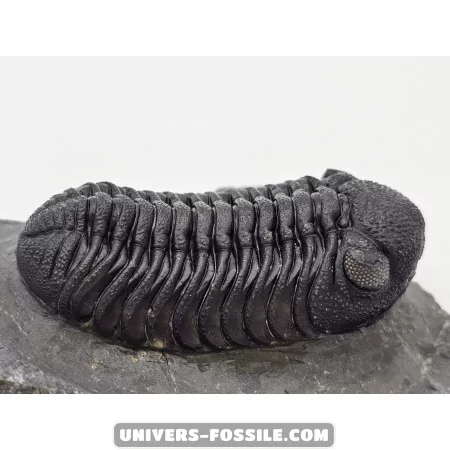Phacops Trilobites: Ancient Fossils Providing Insights into Prehistoric Marine Life

Discover the Fascinating World of Phacops Trilobites
Phacops trilobites are a fascinating species of trilobites that thrived millions of years ago. Belonging to the class of arthropods, these prehistoric creatures are living fossils that have captivated the imagination of paleontologists and natural science enthusiasts.
Origin and Evolution
Phacops trilobites lived during the Paleozoic era, approximately 400 to 450 million years ago. They were widespread in the shallow seas that covered much of the Earth during that time. Their segmented body and hard exoskeleton helped them survive and thrive in a variety of marine habitats.
Anatomy
Phacops trilobites are characterized by their segmented external exoskeleton, which is divided into three distinct lobes. They also possessed large compound eyes, which were likely used to spot prey and detect predators in their environment. Their segmented appendages allowed them to move with agility on the seafloor.
Habitat and Lifestyle
Phacops trilobites were benthic creatures, meaning they primarily lived on the seafloor. They likely fed on organic debris and small organisms they found in the marine substrate. Their ability to move quickly allowed them to evade predators and navigate their underwater world with ease.
Phacops Trilobites
Trilobites, a group of extinct marine arthropods, have captivated the imagination of paleontologists and fossil enthusiasts for decades. Among these intriguing creatures, Phacops stands out as a significant genus that offers valuable insights into prehistoric marine ecosystems.
The World of Phacops Trilobites
Phacops trilobites were ancient inhabitants of the Earth's oceans, with their fossils now providing a window into the past. These creatures roamed the seas during the Devonian period, a time frame ranging from 419 to 358 million years ago. Fossils of Phacops are commonly discovered in sedimentary layers found in regions such as North America and Europe.
Insights from Fossils
Fossils of Phacops trilobites offer paleontologists a wealth of information about the biodiversity and evolution of ancient marine life. By studying these well-preserved remains, scientists can piece together the intricate puzzle of prehistoric ecosystems, shedding light on the diversity and dynamics of ancient seas.
Continuing Fascination
The allure of Phacops trilobites extends beyond their scientific significance. Their complex anatomy, mysterious lifestyle, and importance in unraveling the Earth's geological history continue to captivate researchers and enthusiasts alike. The study of Phacops fossils fuels ongoing discoveries and discussions in the field of paleontology, inspiring a deeper understanding of our planet's ancient past.
Conclusion
In conclusion, Phacops trilobites represent a fascinating chapter in the story of Earth's ancient inhabitants. Through their fossils, we gain valuable insights into the evolution of marine life and the geological changes that have shaped our planet over millions of years. The legacy of Phacops trilobites endures as a testament to the wonders of the natural world and the ongoing quest to unravel the mysteries of our prehistoric past.
